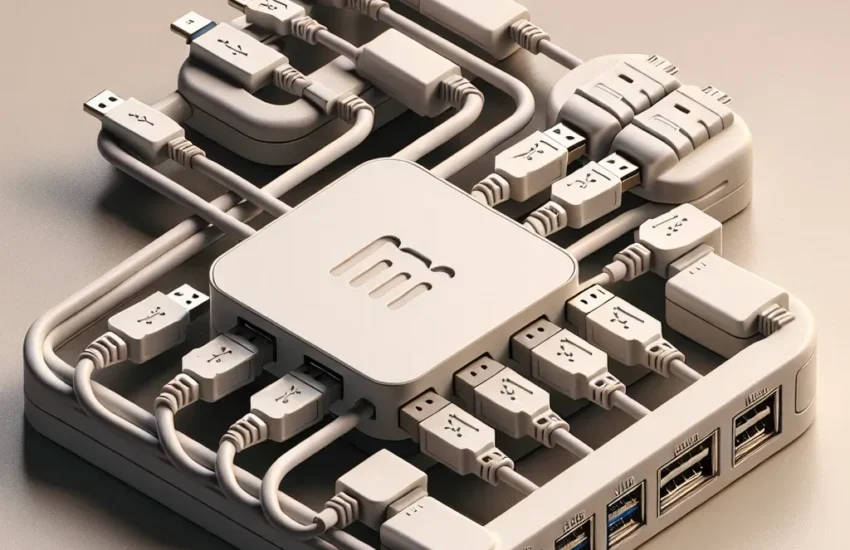When it comes to expanding storage capabilities for your digital files and data, Network Attached Storage (NAS) solutions have become increasingly popular. They offer centralized data access, remote access features, and often include redundancy for data safety. However, as your storage needs grow, you might wonder: Can I connect a USB hub to a NAS for more storage expansion?
In this article, we will explore the feasibility of this setup, the potential benefits, and the limitations associated with using a USB hub with a NAS. We will also review relevant data regarding compatible devices and additional considerations.
| Aspect | Details |
|---|---|
| Primary Functionality | Data storage and management over a network |
| Common NAS Brands | Synology, QNAP, Western Digital, etc. |
| USB Hub Role | Expand the number of USB devices connected |
| Typical Uses | Connecting additional external drives, printers, etc. |
| Limitations | Not all NAS systems support USB hubs; performance may vary |
Understanding NAS Devices
A NAS (Network Attached Storage) is essentially a file server that connects to your home or office network. It allows multiple users and devices to access files remotely. It typically comes with multiple drive bays, which can be populated with hard drives, allowing for RAID configurations to enhance redundancy and performance. Key characteristics of NAS devices include:
- Centralized Storage: Consolidate files in one location.
- Remote Access: Access files over the internet from anywhere.
- Data Redundancy: Protection against hard drive failures.
- Media Streaming: Serves media content, such as videos and music, locally or remotely.
What is a USB Hub?
A USB hub is a device that expands a single USB port into multiple ports, allowing you to connect several USB devices simultaneously. USB hubs can be powered or unpowered, with powered hubs providing additional power to connected devices. The primary functionalities of USB hubs include:
- Expanding Ports: Letting you connect multiple USB drives, keyboards, mice, or printers.
- Portability: Many hubs are compact and easy to transport.
- Powering Devices: Some hubs provide power to devices needing it.
Can You Connect a USB Hub to a NAS?
The short answer is: it depends on the NAS device you are using. Here are some critical factors to consider:
1. Compatibility with USB Ports
Not all NAS devices support the use of USB hubs. The ability to connect a USB hub largely depends on the NAS operating system and the supporting hardware. Some manufacturers integrate this feature into their systems, while others do not:
- Check Manufacturer Specifications: Review the user manual or manufacturer’s website for specific compatibility details regarding USB hubs.
- System Limitations: Some NAS may only recognize and support a limited number of storage devices, potentially affecting performance.
2. Types of USB Hubs
There are different types of USB hubs available, including:
- Powered USB Hubs: Recommended for NAS use, as they often can support multiple external drives.
- Passive USB Hubs: These may not deliver sufficient power for multiple drives and are less suitable for NAS.
3. Performance Considerations
While connecting a USB hub to NAS can provide additional storage, it does come with performance considerations:
- Data Transfer Speeds: The speed of data transfer will depend on both the USB hub and the NAS connection type.
- Network Congestion: If multiple users connect simultaneously, accessing data from those drives can create congestion and slow down performance.
Setting Up a USB Hub with Your NAS
If your NAS does support USB hubs, here’s a general guide on how to get started:
- Check Compatibility: Before connecting, confirm compatibility with the NAS documentation.
- Connect the Hub: Plug the USB hub into an available USB port on the NAS.
- Add External Drives: Connect external hard drives or other devices to the USB hub.
- Power On: If using a powered hub, make sure it’s plugged in and powered on.
- Configure on NAS: Go to the NAS management interface and ensure that the external drives are recognized.
Alternative Expansion Options
If connecting a USB hub isn’t a viable solution for your NAS, consider these alternatives:
1. Installing Additional Drives
Many NAS devices come with multiple drive bays, allowing you to install additional hard drives directly.
2. Upgrading Current Drives
Replacing existing drives with larger-capacity ones can help without requiring external connections.
3. Using Network Drives
You can also set up additional NAS units connected over the network, allowing data access and redundancy.
4. Cloud Storage Solutions
Utilizing cloud storage services can complement your NAS and provide additional backup solutions.
Conclusion
Connecting a USB hub to your NAS can potentially expand your storage options, but it comes with several caveats. It is essential to check whether your specific NAS model supports this functionality and what limitations may arise from its implementation. For those looking for ways to maximize their storage setups, reviewing the methods outlined here can lead to more significant and more efficient storage solutions.
Ultimately, whether or not you can successfully connect a USB hub to your NAS for more storage expansion depends on compatibility and the specific requirements of your setup. Always ensure to stay informed and perform due diligence when considering enhancements to your NAS storage system.

